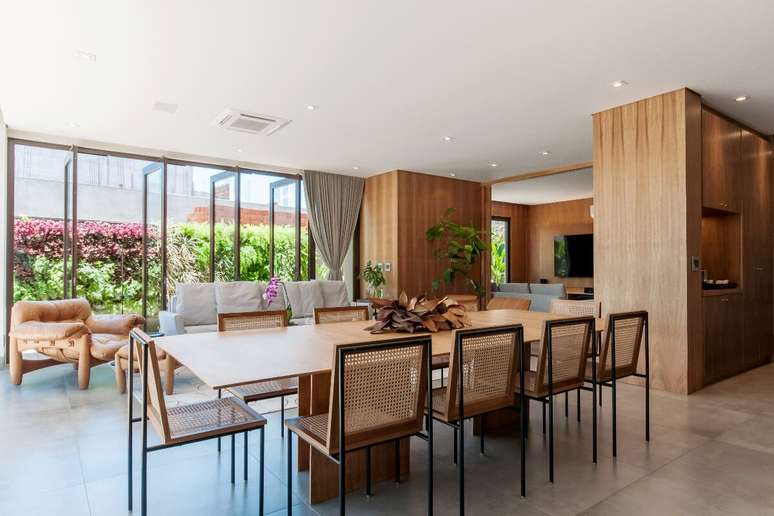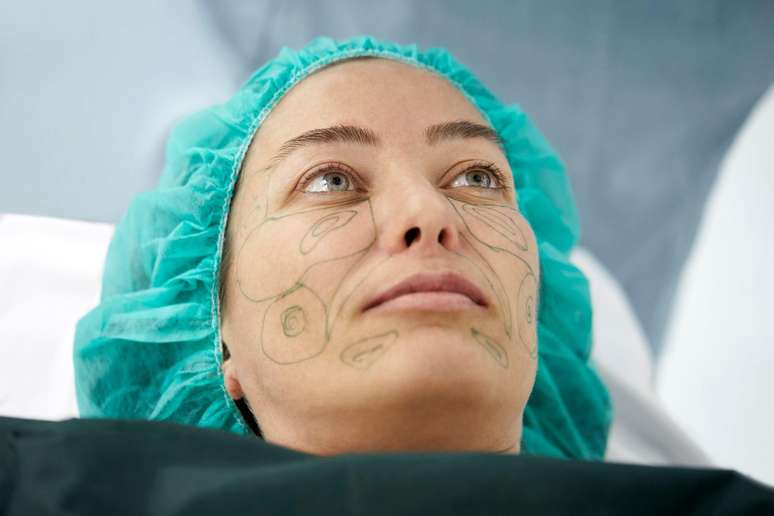Discover how each typology offers different advantages for everyday life and for furnishing the environment
The table plays a role that goes beyond the simple place where meals are consumed. It contributes significantly to the aesthetics and functionality of the environment, especially in living rooms and dining areas. gourmets. In addition to considering the shape and size, the choice of the top material is essential. This is because each type offers different properties in terms of durability, appearance and ease of maintenance.
“This is not a simple detail, since this base has the task of supporting the dishes served, as well as the thermal variations between hot and cold and the humidity of the glasses,” says architect Vanessa Paiva, partner at Paiva e Passarini Arquitetura, when choosing a table for a project.
The decision is the result of a series of questions that need to be answered in advance. THE table Will it be for the dining room or the gourmet area? How much space is available? Will it be used constantly or not? Will the client use it for everyday family life or to receive guests?
Follow below the other factors and materials analyzed by architects Vanessa Paiva and Claudia Passarini to choose the ideal table top.
1. Wood
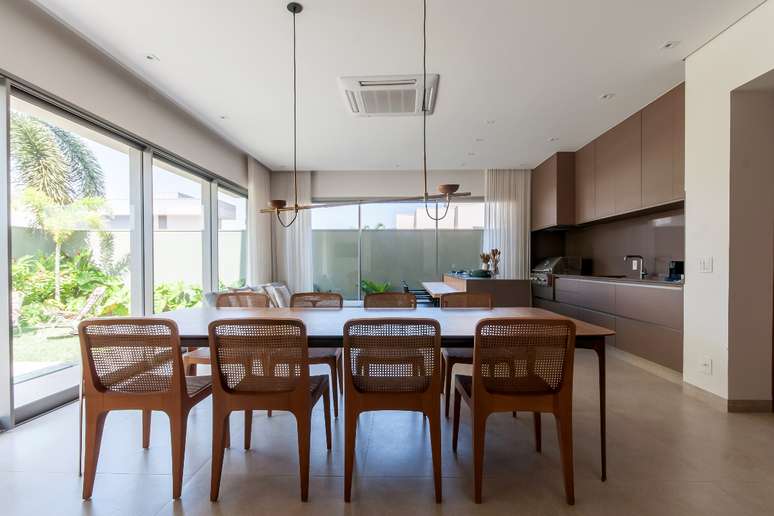
Usually the most used, the duo explains that, when wood is properly protected, it is a high-quality material. quality and resistance. “With proper preparation it becomes very easy to use and it is very difficult to find a brand of glass“, Claudia is an example. In the gourmet sector, it is excellent for consuming foods such as barbecue, as not only does it not soak grease into the veins, but it is also easy to clean.
2. Hairspray
Lacquer is a type of paint that can be applied to different materials such as wood, iron and glass and gained popularity in the 1970s for its glossy or matte appearance. The variety of colors, the smooth, high-quality and uniform finish, resistance to atmospheric agents and natural corrosion over time are some of its positive qualities.
These properties are accompanied by a “however”: the fragility compared to the resistance of wood. It scratches easily and since it does not resist high temperatures, the lacquer of dining tables requires extra protection. “In these cases we can work with glass to preserve the finish,” suggests Claudia.
3. Glass
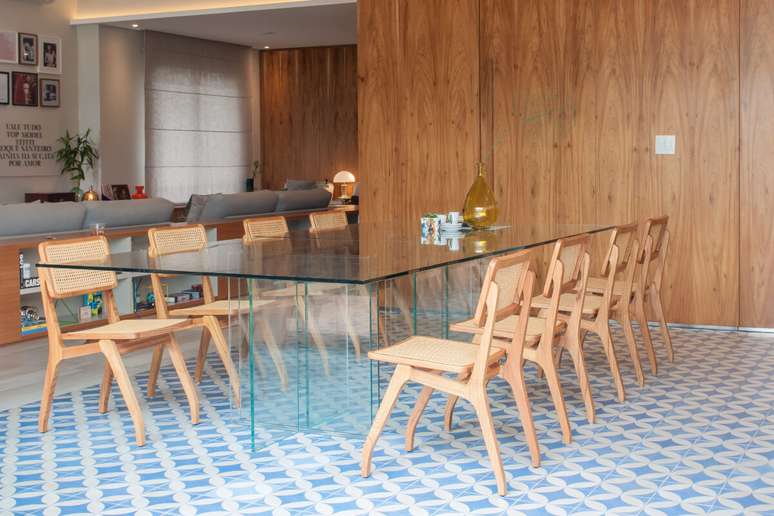
The architects take advantage of this opportunity to dispel a myth about the fragility that many attribute to glass. According to them, contrary to what many might think, the material is in fact resistant and, as long as it has the appropriate thickness, can be as durable as wood.
In interior design, you can compose different stylesfrom classic to contemporary, and thanks to its smooth surface, it simplifies cleaning after meals. “The care we recommend is based on the predisposition to risks,” warns Vanessa.
4. Stone
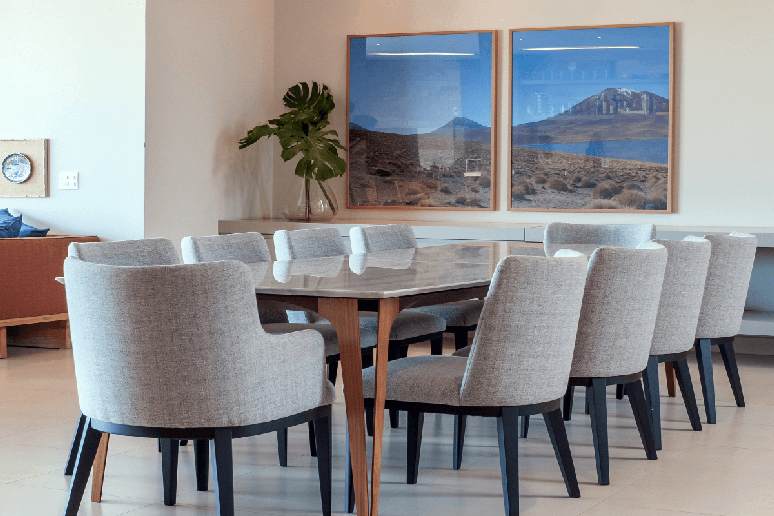
Claudia considers the stone one of the elements more practical for use on table surfaces. Resistant to heat and scratches, the caveat is often its incompatibility with the environment, which can be overloaded if there are already references to the mineral in other objects.
5. Corten steel
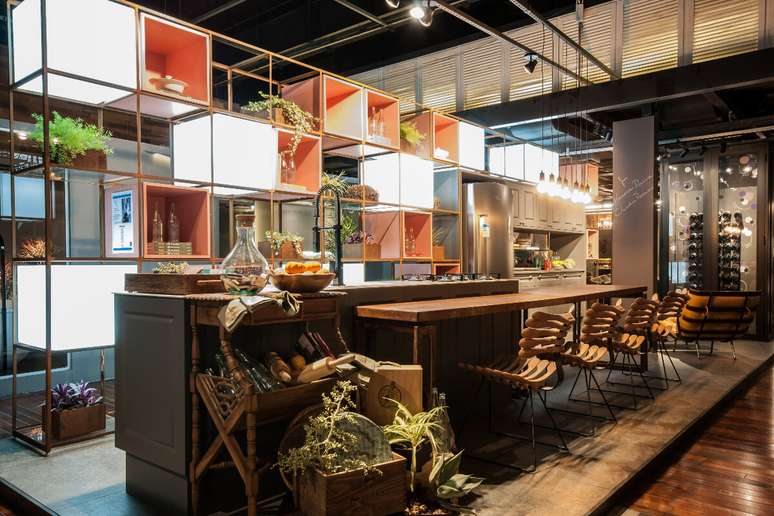
Also known as weathering steel, it is extremely durable and corrosion-resistant, provided it is properly coated, and stands out for its unique and sustainable appearance. “It is the favorite material in our office,” Claudia and Vanessa confess.
According to them, Corten steel is clever, as it ages very well over time and the stains that appear become part of the normal process of its existence. “We consider Corten steel like demolition wood, because the passing of the years makes it even more exuberant”, complement.
6. Synthetic

Synthetic materials with aluminum are perfect for outdoor environments. “It is very important to consider that stability and longevity come from the resistance of the furniture to exposure to sun, rain and humidity,” Claudia analyzes. They are easy to clean, resistant to fading caused by UV rays and their smooth surface is comfortable to place cups, plates and other objects.
Top shapes
Deciding the correct shape of the table top in relation to the environment It is essential to ensure the functionality and aesthetics of the space. A round table is a great option for small spaces or those with children, since the absence of corners eliminates the risk of accidents, as well as improving circulation.
A rectangular or oval table is best suited to rooms with quadrilateral characteristics, while a square or round table may be more suitable for rooms with four equal sides. In addition, it is essential to consider the number of people who will normally be hosted around it and the desired functionality.
Daily assistance
In addition to choosing the material in line with the project guidelines, the conservation of the surfaces is ensured through the use of pot and cup bottoms to protect the surfaces from heat and humidity, as well as placemats that prevent friction or scratches. “And you should always follow the instructions recommended by the manufacturer,” concludes the office duo.
By Heloisa Vieira
Source: Terra
Ben Stock is a lifestyle journalist and author at Gossipify. He writes about topics such as health, wellness, travel, food and home decor. He provides practical advice and inspiration to improve well-being, keeps readers up to date with latest lifestyle news and trends, known for his engaging writing style, in-depth analysis and unique perspectives.

